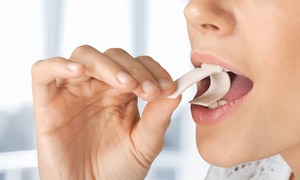
Are you currently struggling with chronic jaw pain thanks to TMJ disorder? If so, it’s important to make sure you aren’t doing anything that could be contributing to the problem. Certain everyday habits could easily make your symptoms worse, and a prime example of that is excessive gum chewing. Just how can chewing gum affect your TMJ disorder? Here’s what you need to know if you want to get your discomfort under control.
What is TMJ Disorder?
TMJ is short for temporomandibular joint, which is the joint on either side of your head that lets you move your jaw so that you can speak, bite, and chew. A TMJ disorder occurs when one or both of these joints are overworked or injured in some manner. The symptoms of TMJ disorder can vary, but they often include jaw pain, earaches, headaches, neck pain, eye pain, and having a hard time opening or closing your mouth. If TMJ disorder is not treated, it can easily grow more severe over time.
Why Does Excessive Gum Chewing Make TMJ Disorder Worse?
When your TMJs are already overworked, the last thing you want to do is use them more than necessary. Unfortunately, chewing on gum involves constant movement of the jaw, which will only serve to expose the joints to even more pressure. Needless to say, this can end up aggravating your TMJ disorder symptoms.
Furthermore, chewing on gum can increase muscle tension in your face and neck, which can lead to a headache. If you’ve already been suffering from headaches due to TMJ disorder, this can make an already unpleasant symptom even worse.
It’s worth noting that a moderate amount of gum chewing can be okay even if you currently have a TMJ disorder; it’s excessive chewing that can lead to problems. As soon as you notice pain in your head or jaw, you should take that as a sign that it’s time to take your gum out of your mouth.
What Should You Do About a TMJ Disorder?
There are a number of steps you can take at home to reduce the symptoms of TMJ disorder. For example, it’s generally recommended that you avoid foods that are especially hard or require a lot of chewing. It can also help to periodically hold a warm compress over your jaw joints.
In many cases, your dentist can treat a TMJ disorder with a personalized occlusal splint. When you go to bed wearing this device, it will move the jaw slightly forward to help it find a better resting position while you sleep; this can take some of the pressure off your TMJs and give them a chance to recover. Another treatment option is equilibration, which involves making small adjustments to the teeth to correct any problems with your bite that could be contributing to your TMJ disorder.
By adjusting your everyday habits appropriately and seeking professional treatment, you can get your TMJ disorder under control and find relief from your jaw pain.
About the Author
Dr. Jose-Luis Ruiz has over 20 years of dental experience and is considered one of the top dentists throughout California. He has been on the cover of several dental journals, and he is affiliated with a number of professional organizations, including the California Dental Association. He is happy to help patients find relief from their jaw pain with customized occlusal splints and equilibration. If you think you have a TMJ disorder, you can schedule an appointment with Dr. Ruiz at Dr. Ruiz & Associates, Inc. in Burbank by visiting his website or calling (818) 558-4332. patients find relief from their jaw pain with customized occlusal splints. If you think you have a TMJ disorder, you can schedule an appointment with Dr. Ruiz at Dr. Ruiz & Associates, Inc. in Burbank by visiting his website or calling (818) 558-4332.




